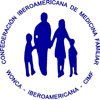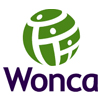Skin conditions in returning travelers
Resumo
Introduction: More people (both rural & urban) are traveling to different destinations (both rural & urban) world wide than ever before. Over 1 billion international tourist arrivals in 2012, twice that in 1995. Rural physicians both at destination sites and home countries need to be well versed with identifying travel related skin conditions, their treatment as well as preventive measures.
Objective: To describe the different groups of skin conditions seen in returning travelers over 10 years time and to identify possible risk factors – both personal and geographical.
Methodology or experience description: Retrospective observational study. Chart (both paper and electronic) review of 344 returning travelers over 10 years, 1998-2008 seen at the University of Ottawa Travel and Tropical Medicine clinic.
Results: Top 4 skin conditions: bacterial skin infections (24.3%), insect bites (13.4%), Cutaneous lesishmaniasis (9.4%), and non –infection rashes (9.1%). Other chronic debilitating conditions: Leprosy, onchocerciasis, and skin Tbc. Over half of cutaneous leishmaniasis cases occurred in the Canadian Military in Afghanistan. Risk factors: disease endemic destination, lack of insect and animal bite prevention measures, inadequate general hygiene practices, traumas to the skin, walking in the jungle with no proper foot wear (snake bites) and unprotected sex (genital herpes). Pre travel advice: 1/3 rd of total study population but all of Military personnel received pre travel advise.
Conclusions or Hypothesis: Travel related skin conditions cause significant morbidity. Further education of travelers and equipping them with appropriate tools can not be over emphasized. Rural physicians both at destination sites and home countries need to be well versed with identifying travel related skin conditions, their treatment as well as preventive measures. Prevention is better than cure!
Palavras-chave
Texto completo:
PDF (English)Apontamentos
- Não há apontamentos.
Este periódico é de responsabilidade das associações:
Apoio institucional:







